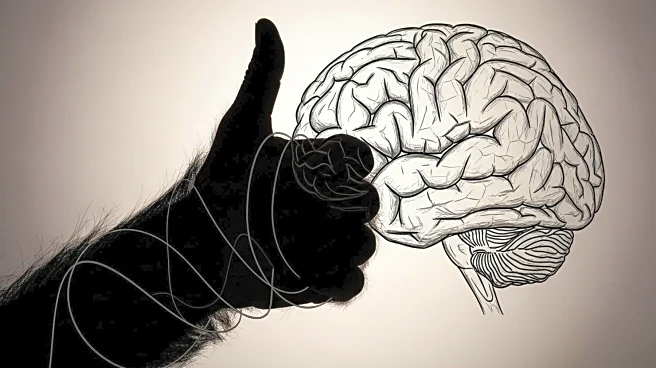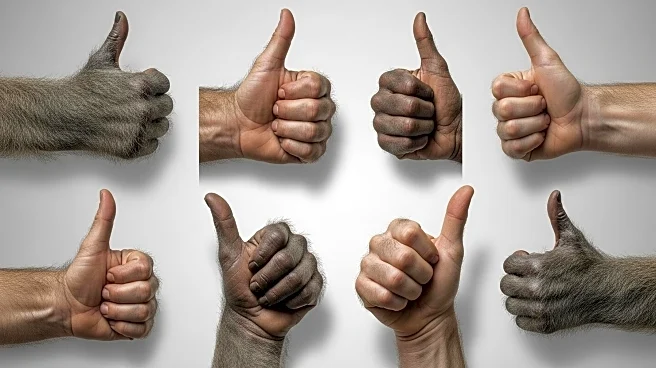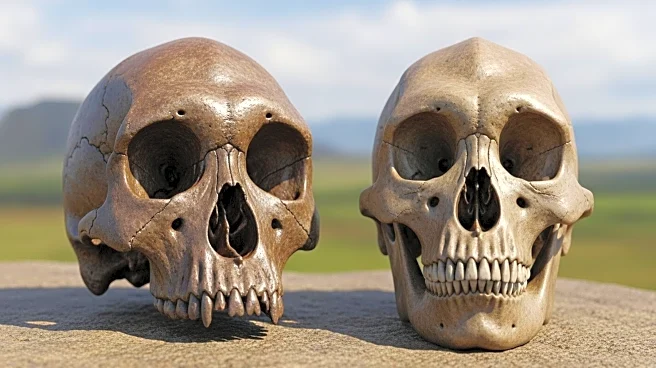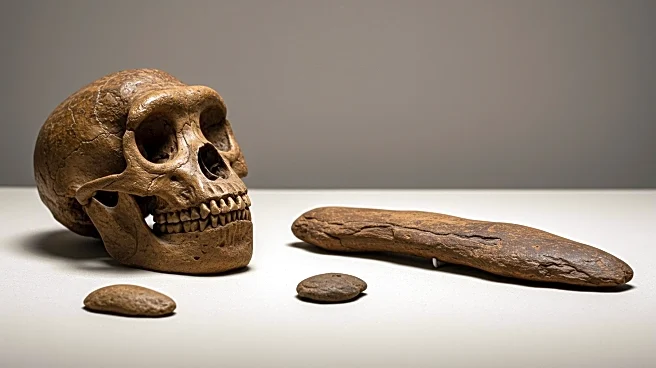What's Happening?
Scientists at the University of Reading have discovered a correlation between thumb length and brain size across 94 different primate species. The study, published in Communications Biology, indicates that species with longer thumbs, which aid in gripping objects, tend to have larger brains. This research provides the first direct evidence that manual dexterity and brain evolution are interconnected throughout the primate lineage. The findings suggest that as primates developed better object manipulation skills, their brains evolved to accommodate these new abilities. The study also highlights that longer thumbs are linked to the brain's neocortex, which processes sensory information and supports cognition and consciousness, rather than the part responsible for movement.
Why It's Important?
The research underscores the evolutionary relationship between physical traits and cognitive development in primates, offering insights into how human ancestors may have evolved. Understanding this connection can enhance knowledge of human evolution and the development of cognitive abilities. The study's implications extend to fields such as anthropology, neuroscience, and evolutionary biology, potentially influencing how scientists approach the study of brain evolution and manual dexterity. This research could lead to further exploration of how physical adaptations have historically influenced cognitive capabilities in humans and other primates.
What's Next?
Further research is needed to determine the exact mechanisms by which the neocortex supports manipulative abilities. Scientists may continue to study both living primates and fossils to deepen understanding of the evolutionary processes involved. This could involve interdisciplinary collaboration between neuroscientists, anthropologists, and evolutionary biologists to explore the broader implications of these findings. Additionally, the study may prompt new investigations into the role of other physical traits in cognitive evolution.











